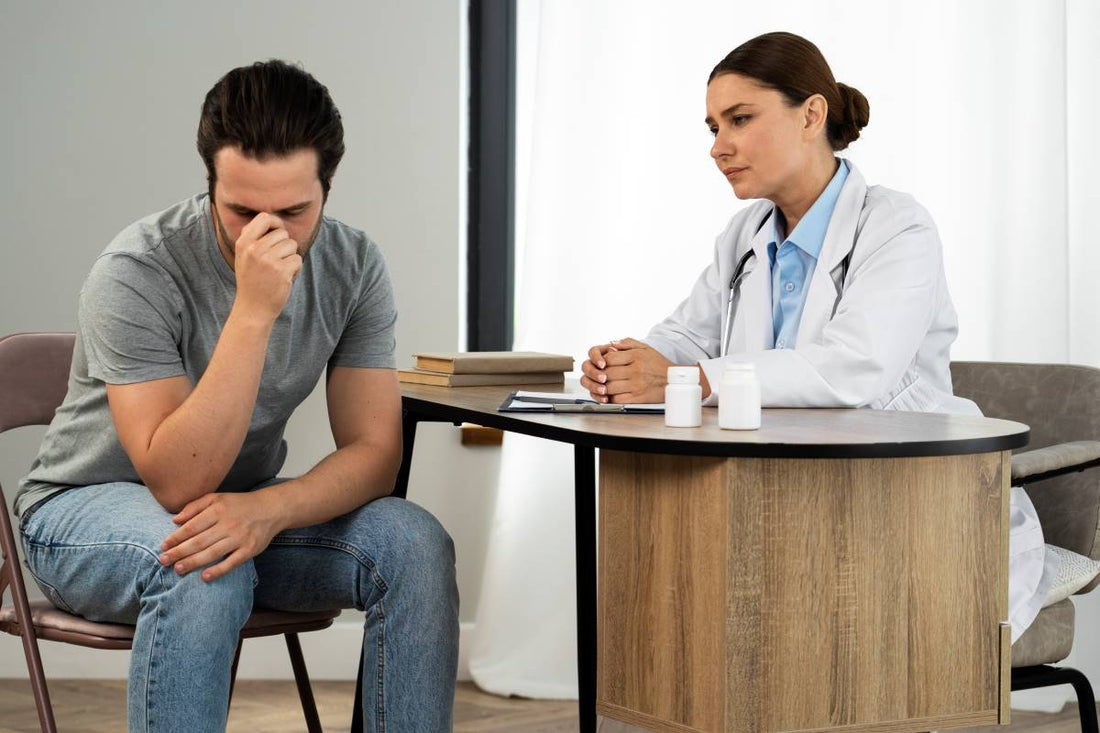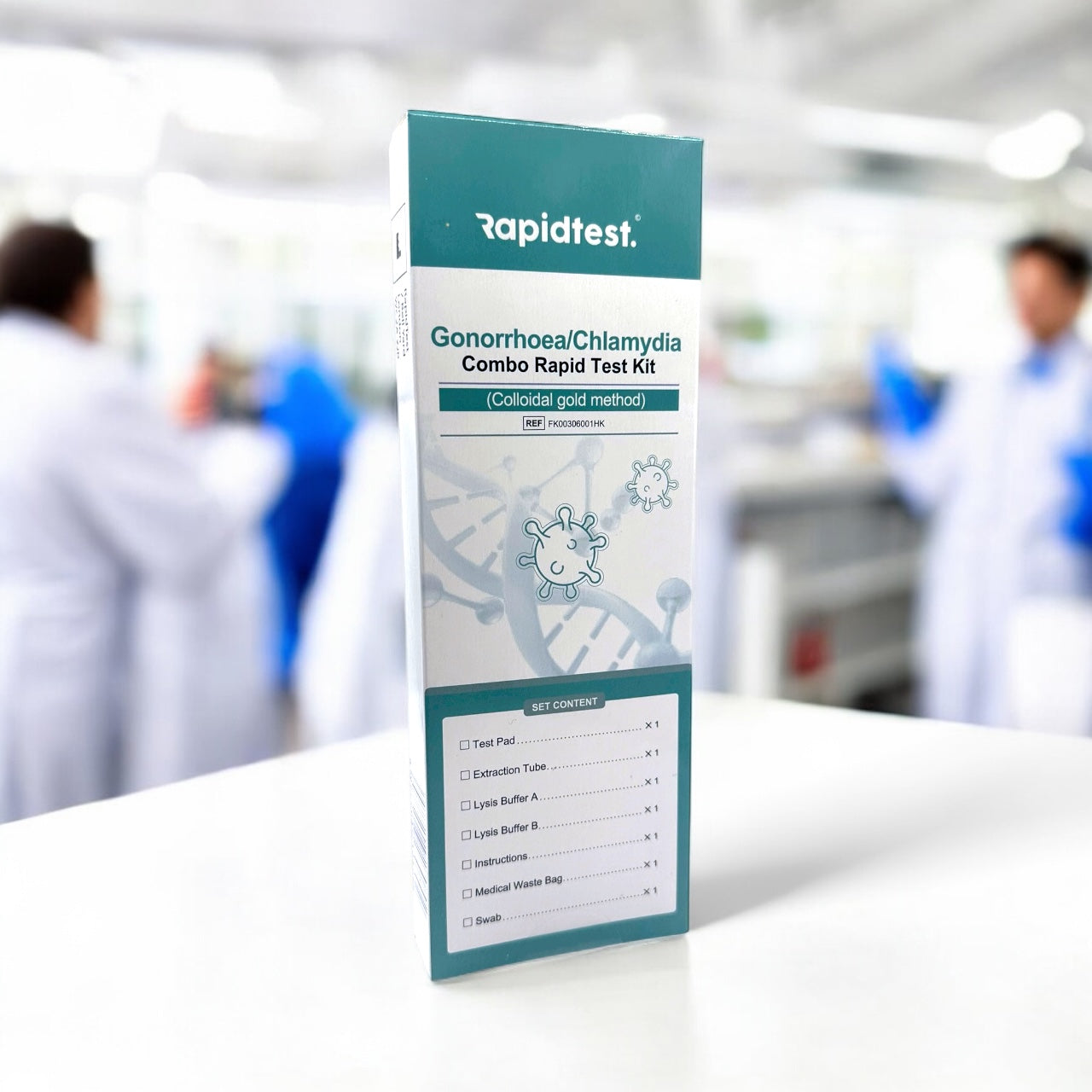
How Soon After Exposure Should You Test for Chlamydia?
Share
🧬 Overview
Chlamydia is one of the most common sexually transmitted infections (STIs) in the UK and Europe, affecting people of all ages — particularly those under 25.
It’s caused by the bacterium Chlamydia trachomatis and spreads easily through unprotected sex (vaginal, oral, or anal).
The infection often causes no visible symptoms, so the only way to know your status is to get tested. But — timing matters.
Testing too early can give a false negative even if you’re infected, while waiting too long can risk complications or transmission to partners.
This guide explains exactly how long to wait before testing, how to interpret results, and when to retest after treatment — all based on the latest clinical guidance.
⏳ Understanding the “Window Period”
The window period is the time between when you’re exposed to an infection and when it can be reliably detected by a test.
For chlamydia, the bacteria typically take 7–14 days after exposure to multiply to a detectable level.
If you test too soon (e.g., 1–3 days after unprotected sex), your body may not yet show a positive result even if you’re infected.
✅ Ideal testing window: 7–14 days after exposure
🔁 Retest: 3 months after treatment or new partner exposure
Testing during this window ensures the test can detect the Chlamydia trachomatis antigen with high accuracy.
→ Chlamydia Rapid Test
→ STI Test Collection
📅 When to Test – Based on Common Scenarios
| Situation | When to Test | Why It Matters |
|---|---|---|
| Unprotected sex | Wait 7–14 days | Allows bacteria to reach detectable levels |
| New sexual partner | Test 1–2 weeks after first contact | Detect early infection |
| Symptoms appear early | Test immediately, retest later | Early detection, but confirm with follow-up |
| After antibiotic treatment | Retest 3 months later | Ensure infection is cleared |
| Ongoing exposure (multiple partners) | Test every 3–6 months | Routine screening recommended |
Even if you’re symptom-free, routine testing every few months is the best way to maintain sexual health and prevent transmission.
⚠️ What Happens If You Test Too Early?
If you take a Chlamydia Rapid Test too soon after potential exposure (e.g., within the first few days), the result might show negative because the infection hasn’t developed enough to trigger a positive test result.
This is called a false negative — it can give a false sense of reassurance and delay treatment.
If you have symptoms or believe you’ve been exposed, retest after 7–14 days even if your first test was negative.
Symptoms to monitor in that time include:
- Burning or discomfort when urinating
- Abnormal vaginal or penile discharge
- Pain during sex
- Bleeding between periods
- Pelvic or testicular pain
→ Comprehensive STI Test Kit
→ How to Use a Chlamydia Rapid Test
🧾 Why Retesting Is So Important
Even after successful treatment, chlamydia can return if your partner isn’t treated or if you’re exposed again.
Public health guidelines recommend retesting three months after treatment, even if you have no symptoms.
Why? Because:
Reinfection rates are high — around 1 in 5 people test positive again within 6 months.
- Long-term, untreated chlamydia can cause pelvic inflammatory disease (PID), infertility, and epididymitis (inflammation in the testicles).
- Regular retesting helps protect both you and your partners.
→ Comprehensive STI Test Kit – Detects Multiple Infections
→ How to Use a Chlamydia Rapid Test at Home
🔬 Using an At-Home Rapid Test for Fast Results
At-home testing is the most discreet, convenient way to check for chlamydia — no appointment, no lab, no waiting.
The Chlamydia Rapid Test from RapidTest.co provides results in 15 minutes and is over 97% accurate when used correctly.
How to use it:
- Collect a small sample using the provided swab (vaginal or urethral).
- Mix it in the buffer solution.
- Add a few drops to the test cassette.
- Wait 15 minutes and read your result.
If the result is positive, seek medical treatment. If it’s negative but you tested within 7 days of exposure, retest after the 14-day mark to be sure.
🛡️ Prevention Tips
The best way to prevent chlamydia and other STIs is consistent testing and safe sex practices:
- Use condoms correctly and consistently.
- Get tested with new or multiple partners.
- Encourage your partner to test regularly.
- Avoid unprotected sex until results are confirmed negative.
RapidTest.co offers a wide range of CE-marked at-home STI tests, including HIV, Gonorrhea, Syphilis, and Combo Kits.
💬 Frequently Asked Questions
Q1. How long after unprotected sex should I test for chlamydia?
Wait 7–14 days after exposure for the most reliable results.
Q2. What if I still have symptoms but my test is negative?
Retest after a few days or visit your GP for a lab-based confirmation.
Q3. How soon should I retest after treatment?
Retest 3 months post-treatment, or sooner if symptoms return.
Q4. Is the at-home test accurate?
Yes — RapidTest.co’s Chlamydia Rapid Test is over 97% accurate and CE-certified.
Q5. Is packaging discreet?
100%. Orders are shipped in plain, unbranded packaging for privacy.

